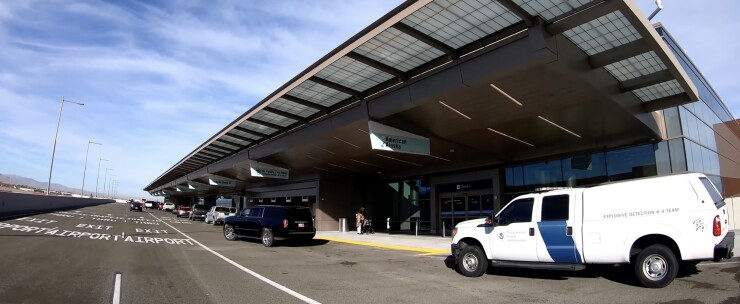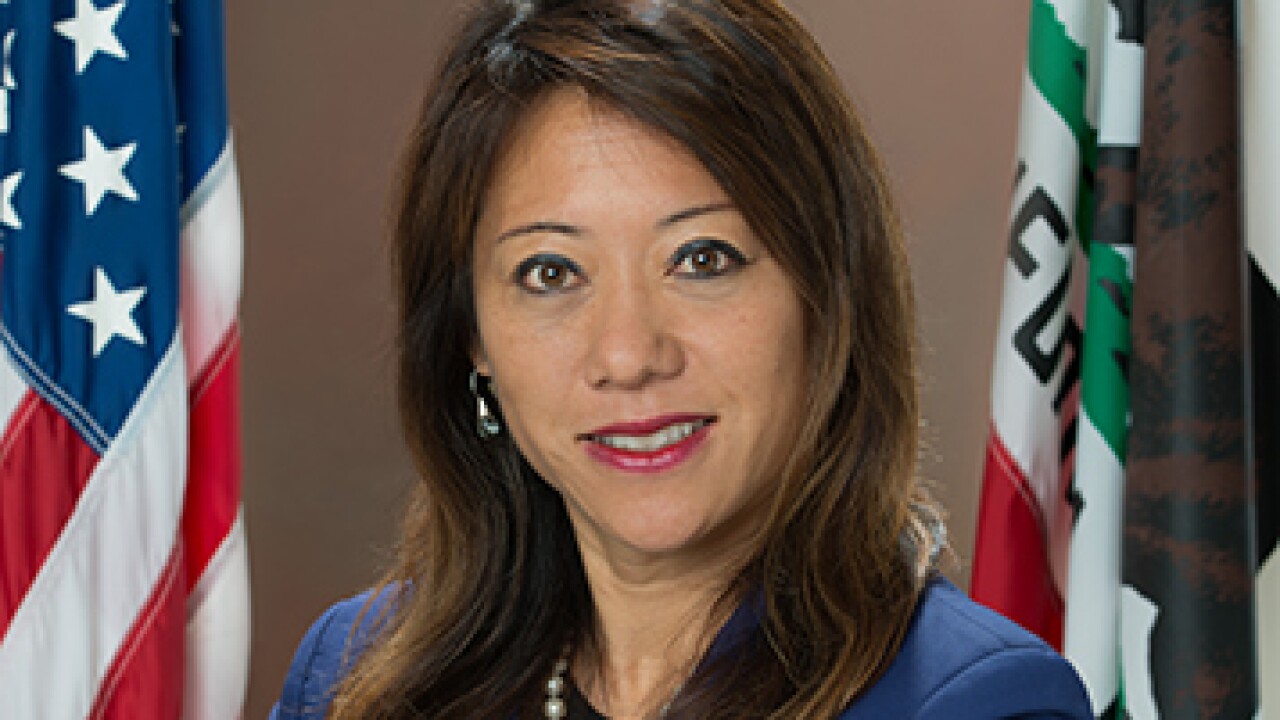With air travel rapidly returning to pre-pandemic norms, Salt Lake City is offering $900 million of revenue bonds for redevelopment of its airport.
“This is really the only big international airport that Utah is going to have,” said Bill Wyatt, chief executive for Salt Lake City International Airport in a presentation on the redevelopment plan. "So, it’s really important to get it right.”
In 2017 and 2018, the airport issued about $1.7 billion of bonds to finance Phase 1 construction costs that are now in service, said airport chief financial officer Brian Butler.

“With this transaction, we are proposing about $900 million in additional airport revenue bonds to continue Phase 2 of the project, which would leave approximately $600 million left to be financed in 2023,” Butler said.
Of the $4.45 billion budget for the entire project, 85% is complete or under guaranteed maximum-price contract, said Kevin Robbins, chief engineer for the airport.
“Given the downturn in passenger traffic due to the pandemic, the department, in consultation with the signatory airlines, modified the phasing schedule for the remainder of the construction of the new SLC,” Wyatt said.
“Rather than completing concourses A and B in phases while leaving elements of the previous concourses in service, the new plan demolishes all of the legacy facilities and constructs Concourse A East in a single phase,” Wyatt said.
“Traffic recovery is rapid, achieving 88% of May 2019 levels by June,” Wyatt said in a pre-sale roadshow.
Bob DeMichael, managing director at Citi and lead banker on the deal, said pricing is scheduled next week with Goldman Sachs as co-manager.
The bonds are coming in two series, with $710 million subject to the alternative minimum tax. Series B will be non-AMT bonds.
The bonds are rated A2 by Moody’s Investors Service, A by S&P Global Ratings and AA-minus by Kroll Bond Ratings Agency. Outlooks are stable.
“Construction risk was significantly reduced as the airport opened the first half of its $4.5 billion New SLC program in the fall of 2020,” said Moody’s lead analyst Earl Heffintrayer. “But increasing costs for labor and materials and to maintain rapidly retuning operations pose risk to meeting the updated program estimate.”
The Salt Lake City Department of Aviation has been working on updating the master plan since 2018, and held the final public information meeting June 17.
Wyatt and other officials outlined the vision for the airport’s next 20 years.
“Our new airport was envisioned more than 20 years ago in the airport’s previous master plan,” Wyatt told the attendees.
“When, COVID hit, and we didn’t really have an opportunity to introduce our new airport to the public.”
The airport opened Phase 1 of redevelopment in fall 2020, and is now in Phase 2, which is expected to open in 2023-24.
"April 2020 was the low point for passenger volumes here at Salt Lake City," Butler said. "We were down about 92% compared to our April 2019 levels."
Federal grants and awards of nearly $200 million helped offset falling revenues during the pandemic, Butler said.
"If you fast-forward to May 2021, this was the very first month that the airport broke over 1 million enplanements on a monthly basis. You would have to go all the way back to February 2020 to see when the airport had more than 1 million enplanements on a monthly basis."
The Department of Aviation contracted with consultant RS&H to prepare the study. RS&H is an architectural, engineering and consulting firm that specializes in design, planning and environmental services for airports in the United States.
Salt Lake City Airport Enterprise operates two other airports, South Valley Regional Airport at West Jordan, and Tooele Valley Airport.
Salt Lake City International is a large hub for Delta Airlines.
Salt Lake City International Airport was debt-free in 2017 when it issued its first $900 million of revenue bonds for the redevelopment plan that was pegged at $3 billion at the time.
The 2017 issue was the airport's first since a $62 million revenue bond sale in 2004.
"That was a refunding issue, so it's been even longer since we sold a new money issue for the airport," said then-director Maureen Riley, who has since retired.
"To my knowledge, we're the largest airport in the country with no debt outstanding," Riley said.

Delta reported in its most recent earnings report that June quarter adjusted operating revenue improved 76% from the March quarter.
“Domestic leisure travel is fully recovered to 2019 levels and there are encouraging signs of improvement in business and international travel,” said chief executive Ed Bastian.
“With the recovery picking up steam, we are making investments to support our industry-leading operation,” he added. “We are also opportunistically acquiring aircraft and creating upside flexibility to accelerate our capacity restoration in 2022 and beyond in a capital-disciplined manner.”
Delta is investing more than $12 billion in airport projects that modernize the airline’s hub infrastructure and customer experience, including new construction at Los Angeles International Airport and New York’s LaGuardia Airport along with SLC.
Salt Lake City will remain an important part of Delta’s overall network strategy as the airline recovers from the global pandemic, the airline said.
“For the past 60 years, Delta has remained a steadfast, strategic partner to the Salt Lake City International Airport,” said Scott Santoro, Delta’s Vice President - Sales for the West Coast. “This incredible space is more than the largest new build in the Western United States for more than 25 years,” he said. “It solidifies Delta as the airline of choice for passengers traveling to, from, and through Salt Lake for both business and leisure travel for years to come.”
Salt Lake City is one of several multi-billion-dollar airport projects that continued during the pandemic.
In neighboring Colorado, Denver International Airport is undergoing the largest redevelopment in its history. Other major redevelopments include Los Angeles International Airport and LaGuardia in New York.
The U.S. Department of Transportation’s Federal Aviation Administration recently granted more than $845 million for projects at around 388 airports in 49 states and the District of Columbia.
Funding from the fourth round of fiscal year 2021 Airport Improvement Program grants will support the projects, which aim to expand the airports’ capacity, improve accessibility and mitigate environmental impact.
“We don’t want to just build our airports back to the way things were before the pandemic,” said U.S. Transportation Secretary Pete Buttigieg. “We want our airports to be better than ever accessible to all, delivering maximum benefit to their communities and helping, directly and indirectly, create jobs for millions of Americans.”





